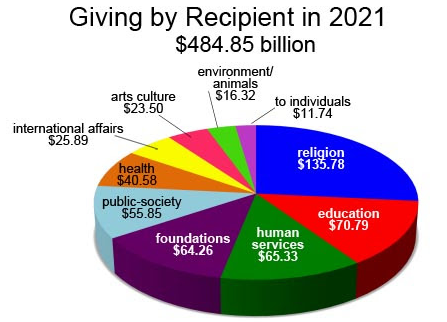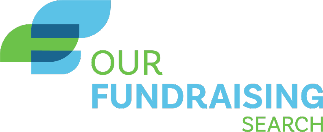Heads of School often have a plethora of comparative data at their fingertips to assist in analyzing their schools’ programs. From academics, admissions, athletics, etc. there is no lack of resources with which to provide benchmarking data. However, when it comes to fundraising, Heads of School and their development offices are often siloed in their strategic analysis of efforts, with little comparative data to offer insight outside of their own year-over-year goals and achievements. How are your school’s development efforts in comparison to other schools? Did you fair as well (better? worse?) as other SAIS schools over the past five years? How did the pandemic affect your school’s fundraising efforts and is that on- or off-trend for the market?
In a coordinated effort to provide much needed comparative data on independent school fundraising, the nonprofit development consulting firm, Our Fundraising Search, partnered with the Southern Association of Independent Schools in July 2022 to conduct a survey of Heads of School to measure trends, challenges and opportunities in independent school fundraising. This survey aimed to compare results against a similar survey conducted in 2017¹ and offers a current perspective of independent school development efforts, while also offering some insight into how the landscape has changed in the past five years.
The View From Above
Before delving into the survey results and subsequent recommendations, it’s always wise to start with a 360° view. For us, that’s the Giving USA annual report on philanthropy in the USA2.
Giving USA is an initiative of the Giving USA Foundation and research is conducted by the Indiana University Lilly Family School of Philanthropy at IUPUI. For 65 years, this report has provided insight into giving to charitable organizations across the U.S.
This year’s report shows that U.S. charities received an estimated $484.85 billion from donors which includes individuals, bequests, foundations and corporations. While that is a 4.0% increase over 2020, it remains flat after adjusting for inflation.
“The story of charitable giving in 2021 is closely tied to the events of 2020, a historic year that included a global pandemic, economic crisis and recovery, efforts to advance racial justice, and an unprecedented philanthropic response. In 2021, Americans continued giving more generously than before the pandemic. However, the growth in giving did not keep pace with inflation, causing challenges for many nonprofits,” said Laura MacDonald, CFRE, chair of Giving USA Foundation and Principal and Founder of Benefactor Group. “In 2021, many donors returned to their favored causes, with many of the sectors that struggled in 2020 making a recovery in 2021.”
Who’s Giving?

Individual donors remain the single largest piece of the pie, with giving estimated at $326.87 billion (or 67% of all giving). When combined with bequests, which are charitable gifts given posthumously by individuals, that total increases to 76% of all charitable giving.
Foundation giving grew by 3.4% in 2021. With 19% of all charitable giving coming by means of these institutions, foundations are second in overall giving. Most noteworthy, giving by foundations has grown 10 of the last 11 years. 2021 was the second-highest amount (adjusted for inflation).
Where are the Donations Going?

Education, which includes K-12 schools, higher education and libraries, continues to be the second largest recipient of giving in the U.S. (14%), behind religion (26%). Unfortunately, though, while overall charitable giving was up, when adjusted for inflation, giving to education fell in 2021 for the first time since 2013 by almost 3%.
Giving to religion grew by 5.4% (0.7% adjusted for inflation). Considering that religious giving has remained flat for the last several years, religious independent schools should take this as encouragement.
2022 Fundraising Survey Results³
The following findings are based on information provided by the 149 SAIS Heads of School who responded to the survey, a 39% response rate. The average respondent, highly similar to the 2017 survey, was a 58-year-old day school with an alumni base between 1,001-3,000. 55% of respondents have less than 500 students, 58% are K-12, and 58% have a budget less than $10M (down from 62% in 2017).
Most schools (73%) are raising less than $1M from fundraising; While a concerning majority (53%) are carrying more than $1M in debt.
If you are amongst the 34% of schools who are debt-free, throw yourselves a party!That is certainly no small feat and you should make sure to inform your constituents of that fact, especially when asking for capital gifts.In comparison to the 2017 survey, where the average debt of school respondents was $5.4M, this trend has, unfortunately, not changed much in the last five years. 28% of schools are carrying between $1-$5M in debt, while an additional 25% are carrying more than $5M in debt.
Development Committees continue to be under-utilized.
The data most concerning in comparison to 2017 is the involvement of the board of trustees in fundraising efforts, particularly via the development committee.Listed as one of the most challenging activities for a Head, 23% of schools reporting do not have a board development committee, which is an increase of 2% over five years ago. Additionally,
- Schools that have committees but do not meet are up by 10%.
- Schools with committees that meet but only to receive reports comprise 37% of respondents, which is an increase of 15%.
- Most concerning is schools reporting board development committees with at least some level of fundraising activity make up 22%, a disappointing decrease of 26%.
Most schools have a multi-faceted approach to annual fundraising.
This has held true since the 2017 survey, however we’re seeing a strengthening of approaches, most likely due to the sophistication of digital services catching up to the demand of the donor market.
The most commonly used solicitation/marketing methods are email (92%), online giving (90%), social media (80%), personal solicitations (79%) and direct mail (72%). Additionally, 63% utilize monthly giving as part of their annual giving campaign and 70% engage donors through annual events. In comparison, email as a solicitation method is up by 6% since 2017, while monthly giving is also up by 13%. The most under-utilized tools are phone (52%) and text (30%).
Capital campaigns are on the rise.
Not surprisingly, a majority (64%) of responding schools are either in a campaign or are in the planning stages for a campaign. In comparison, only 36% of schools in 2017 were in campaign mode. Considering the uncertainty the last two years presented, many nonprofits opted to either pause, cancel or delay campaigns. As the world is emerging post-pandemic (albeit still with some uncertainty), it is no surprise that a higher percentage of schools are launching campaigns.
Also of note, 36% reported having raised less than $3M in their last campaign; which is down from 56% in 2017. This infers a greater percentage of schools have had success in the past five years with campaigns over $3M, as well as with securing major gifts in general.
Most schools are under-endowed, but working on it.
Listed as the #1 most challenging fundraising activity by Heads, the majority of schools are grossly under-endowed…but they seem to be tackling it! While 24% of schools reporting do not have an endowment, this has decreased by 16% since 2017.
Optimistically, 48% have a planned giving program (an increase of 6%), while another 28% are in the process of developing one. As 29% of schools do not have an endowment at all, and 25% have endowments of less than $1M, it is encouraging to see a greater number of schools making this an area of strategic focus.
Heads are spending time raising money.
A collective applause is being heard throughout development offices across the southeast! Responding Heads of School report spending an average of 24% of their time on fundraising tasks. While the minimum reported was 5%, the maximum was 75%! Most often, Heads are engaging with donors through signing letters/notes, attending committee/campaign meetings, meeting one-on-one with donors, attending cultivation events or conducting public speaking and making personal telephone calls.
While the overall percentage of time Heads of School reported spending on fundraising activities decreased by 3% since 2017, they report an increase in participation in each category of fundraising activities. Most notably, they report a 20% increase in attendance at development committee meetings, a 6% increase in participation in cultivation events and a 3% increase in one-on-one meetings with donors.
When it comes to hiring development officers, Heads significantly weigh personal attributes and “mission fit” higher than experience or credentials.
When asked to rank which qualities Heads value in their development officers, 50% ranked fundraising credentials as the least important hiring qualification (only 10% listed it as the highest) while 50% also ranked “mission and cultural fit” as the most important hiring qualification.
Take-Aways & Recommendations
So, how did you do? Did you improve compared to the standard? Did you do better than the sector? If so, brag about it to your Board of Directors. They need to know. If you did the same or worse, you need to analyze why. Determine the key drivers of your performance, whether good or bad. If you under-performed, it’s critical that you take action to both understand and address the reasons. Sometimes it helps to have an outside third-party to objectively assess your school’s development efforts.
Here are some general recommendations we have for all schools, in general:
Make debt-reduction a priority (or more of a priority).
Institutional donors are leery of debt and this could be standing in your way of getting that next (or first) big gift. Moreover, mature individual donors may take into account your strategic plan for debt-reduction when making their charitable decisions. And if you’re amongst those schools who are debt-free, congratulations! Make sure to use that as a talking point with donors, especially during campaign asks.
Worth noting: if you are in a campaign, resist the notion to borrow the money, and then try to pay it back via fundraising. Fundraising for debt relief is unattractive to nearly all donors.
Activate that Board Development Committee!
Contrary to what an individual board member might say, ALL BOARDS are fundraising boards. They have an ethical obligation to contribute (time, talent and treasure) to the fiduciary health of the school. Start small, with cultivation and stewardship responsibilities, then ease them into solicitations by inviting them along with you and/or your development officer. This will be especially important (and will make your job a whole lot easier) if you’re one of the 64% of schools in or getting ready for a capital campaign!
Continue enhancing and expanding approaches to your annual giving program, but don’t forget best practices.
Face-to-face meetings will always be the most effective activity for raising major gifts (no matter for what you are raising money). Make phone calls, write notes and send personalized emails. Remember, events are great. However, they should enhance your donor cultivation and stewardship plans, not serve as a stand-alone activity. What you do after an event to connect with donors and prospects is more important than the actual event.
If you’re looking for one area to delve deeper into, consider your online giving efforts. According to the Blackbaud Institute’s Charitable Giving Report4, online giving to K-12 institutions increased 11.7% over 2020 (compared to 9% across all other sectors). Additionally, while the average online donation overall was $204, independent schools saw an average gift of $1,640! While 12% of all charitable giving came via online, K-12 institutions are lagging at only 6.4% of total fundraising coming online in 2021. Make online giving easy – and utilize text to communicate your online giving opportunities (which was listed as an under-utilized tool).
Focus on the cultivation of major donors and get ahead of the curve!
With a greater number of independent schools in or planning a capital campaign in the near future (which holds true across sectors), there is a high likelihood that your constituency will be faced with multiple campaigns. If it’s true that “the early bird gets the worm”, then you’ll want your campaign to be at the forefront of your donors’ charitable minds before their university, place of worship or other charitable passions that may come calling.
Likewise, institutional donors will likely be faced with multiple concurrent funding requests from similar schools. While individual donors make up the majority of all giving in the U.S., and therefore is where the majority of your development efforts should focus, foundations have increased their giving for the last several years. If this has not traditionally been a part of your development efforts, maybe this is the time to explore foundation opportunities.
It’s always a good time to build your endowment.
While some of your colleagues may question the value of endowments, we believe they are essential for the long-term success and viability of a school. The low levels of endowment are surprising, considering the progress schools have made in planned giving. Planned giving is the best way to build an endowment. It only takes one donor to start the fund. As you look at your major giving donors and potential planned donors, add this to your list of giving options. A named endowment opportunity may appeal to an alumni donor.
Take stock of your time when it comes to fundraising.
When was the last time you asked your development team what activities would be most helpful for you to be a part of? Have you ever asked that? As Head of School, at least 50% of your time should be spent on fundraising activities (more during a campaign). While direct face-to-face solicitations are certainly part of your responsibilities, remember that there are many more activities that lead up to, and follow, an ask. Writing notes, signing letters, making phone calls to check in on a donor or to thank them, invitations to sit with you at a game, performance or fundraising event, coffees and lunches, all are part of the solicitation process. As the main vision-setter for your school, your attention will not go unnoticed by donors and prospects.
Hire the most qualified people, then be nice to them!
In order to reach the lofty goals most schools have set for themselves, hiring decisions need to be highly analyzed. If it has not been your experience, let it be said that, yes, there is such a thing as a candidate that has the fundraising experience needed to take your program to the next level while also being a great mission and cultural fit (take it from two former school development officers). And they can come from outside the school and still fit the culture.
Then…be nice to them. Pay them what they’re worth5, guard their time and job responsibilities (instead of allowing the development office to become the “catch all” for other projects and events), streamline other “asks” and fundraisers, and offer the resources they need to meet institutional goals.
Some Parting Thoughts…
In our experience, there are a few things that distinguish really successful organizations in general, and really successful fundraisers in particular.
- The ability to leverage data to set and adjust strategy;
- The ability to create healthy relationships that are characterized by mutual respect, trust and a sense of obligation; and,
- The ability to see opportunities where others see obstacles.
There is no doubt in anyone’s minds that the last several years created a substantial number of barriers and obstacles for all nonprofits and their fundraising programs. However, we believe independent schools have opportunities right now to move faster in expanding their fundraising models, maybe even ahead of other sectors. At Our Fundraising Search, we have the luxury of working with clients who are best positioned for success and we see a tremendous future for independent school fundraising.
About the Authors:
Linda, Dave and Ailena are the dynamic trio at Our Fundraising Search, a nonprofit development consulting firm which helps nonprofits build and grow high-performing teams using proven strategies for fundraising excellence. For more information and a list of services, visit: www.ourfundraisingsearch.com.
1The 2017 SAIS Fundraising Trends Survey was conducted by Linda Wise McNay, Ph.D., of Our Fundraising Search, and John Marshall, Head of School for Union Academy and former Assistant Head for Development of Wesleyan School.
2For more information on the Giving USA Report: www.GivingUSA.org
3Contact the Our Fundraising Team with any questions about the survey results: www.ourfundraisingsearch.com.
4For the complete Blackbaud Institute Charitable Report: https://institute.blackbaud.com/
5For helpful information on pay-structure, read “What is the Right Amount to Pay a Fundraiser” at www.ourfundraisingsearch.com/blog






Leave A Comment